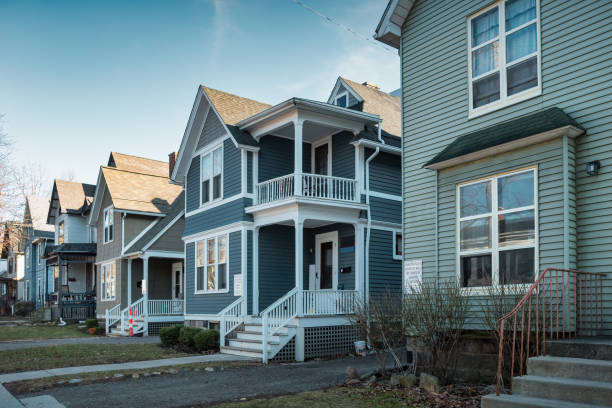The affordable housing crisis continues to intensify across the Midwest, creating unprecedented challenges for construction professionals in states like Illinois, Ohio, Michigan, and Wisconsin. As Rust Belt cities experience urban renewal alongside persistent housing shortages, the construction industry faces mounting pressure to deliver cost-effective housing solutions that serve low-income families.
Understanding the intersection of construction expertise and social impact is essential for professionals looking to participate in this vital market segment across America’s heartland.
The Scale of Opportunity in Midwest Affordable Housing Development
Affordable housing demand has reached crisis levels across Midwest metropolitan areas, with waiting lists stretching into the thousands in cities like Chicago, Detroit, Cleveland, and Milwaukee. Construction companies throughout the region are recognizing the stable, long-term opportunities presented by affordable housing projects, particularly those involving government partnerships.
Market analysis reveals that affordable housing construction represents one of the most recession-resistant industry segments, particularly valuable for Midwest firms navigating economic transitions. Unlike luxury developments that fluctuate with economic cycles, affordable housing maintains consistent demand regardless of market conditions.
The scale of need is particularly evident in Illinois, where extensive Section 8 waiting lists demonstrate overwhelming demand for affordable housing options throughout urban and rural communities. These waiting lists often close quickly due to high application volumes, highlighting the urgent need for increased housing stock across the region.
Unique Construction Challenges in Affordable Housing Projects
Affordable housing construction in the Midwest presents distinct challenges requiring specialized expertise. Budget constraints demand creative approaches to material selection and construction methodologies, particularly given harsh winter conditions that require robust building envelopes. Contractors must master value engineering while accounting for freeze-thaw cycles, snow loads, and energy efficiency requirements.
Regulatory compliance adds complexity, as projects must meet stringent federal, state, and local requirements that vary between municipalities. These regulations specify minimum unit sizes, accessibility features, and construction materials while addressing regional concerns like tornado resistance and basement waterproofing.
Site preparation often presents obstacles, as projects frequently utilize former industrial sites requiring environmental remediation or urban infill locations in cities rebuilding from economic transitions.
Financing Mechanisms and Their Impact on Construction Planning
The financing structure of affordable housing projects significantly influences construction planning. Low-Income Housing Tax Credit (LIHTC) programs create specific timeline requirements and compliance obligations that construction teams must understand. These programs involve complex partnership structures between developers, investors, and contractors, requiring careful coordination.
Grant funding from federal agencies like HUD introduces additional administrative requirements, including detailed reporting and prevailing wage compliance. Construction managers must build these requirements into project schedules and budgets from the outset.
Procurement and Payment Structures
Public-private partnerships require competitive bidding processes that differ from traditional development. Construction companies must develop expertise in responding to complex RFPs that evaluate factors beyond price, including past performance and community engagement plans.
Payment structures may involve draw schedules tied to specific milestones and compliance checkpoints, requiring careful cash flow management.
Technology and Innovation in Affordable Housing Construction
Modern affordable housing construction incorporates advanced technologies to improve efficiency and reduce costs. Modular and prefabricated construction techniques accelerate project delivery while maintaining quality control, significantly reducing on-site construction time and labor costs.
Building Information Modeling (BIM) technology proves valuable in projects where design optimization and clash detection prevent costly field changes. The ability to model systems integration helps maintain tight project budgets and schedules.
Sustainable construction practices are becoming standard, driven by regulatory requirements. Green building certifications like LEED and Energy Star provide additional funding opportunities while reducing utility costs for residents.
Community Engagement and Workforce Development
Many projects include workforce development components requiring contractors to provide training opportunities for local residents. These programs create mutual benefits, providing contractors with skilled trades development while offering community members employment pathways.
Community engagement throughout construction has become increasingly important. Teams must participate in community meetings and maintain positive relationships with stakeholders to prevent delays.
Strategic Considerations for Construction Companies
The affordable housing market offers significant opportunities for construction companies willing to develop specialized expertise. Successful firms build dedicated teams with knowledge of regulations, financing mechanisms, and community engagement practices. This specialization allows companies to compete effectively and develop relationships with key stakeholders, including housing authorities and government agencies.
Geographic diversification within the sector provides additional stability. Companies that adapt their expertise to multiple markets position themselves for sustained growth, as regional differences require flexible project execution approaches.
Positioning for Long-Term Success in Midwest Affordable Housing Markets
The affordable housing construction sector represents a critical intersection of technical expertise, social impact, and business opportunity throughout America’s heartland. As Midwest communities experience urban renewal, construction professionals who deliver quality, cost-effective housing solutions will find themselves at the center of regional transformation.
The scale of opportunity cannot be overstated, as thousands of families remain on waiting lists while communities seek to revitalize neighborhoods. Construction companies that position themselves strategically will benefit from stable project pipelines, diverse funding mechanisms, and contributions to community development.
The future will likely see continued innovation in construction methods and financing mechanisms tailored to regional needs. Companies that invest in understanding these dynamics while maintaining a commitment to quality will be well-positioned to build sustainable, profitable businesses.





